Setting up a password-protected portfolio is a great way to showcase your expertise, skills, and past work to potential clients. You can choose who sees your portfolio (and for how long) and revoke access whenever you’d like.
In this article, we’ll walk you through a step-by-step tutorial explaining how you can create and password-protected portfolio in WordPress. We’ll do this using the Passster plugin. Along the way, we’ll also recommend some WordPress portfolio themes and document management solutions to help you get started with a step in the right direction.
Table of Contents
Why You Should Create a Password-Protected Portfolio
Whether you’re an online business owner, freelancer, or solopreneur, there are plenty of reasons why you should create a password-protected portfolio.
For starters, it makes it easy to share your work with prospective clients. You can simply share a direct link that lets them see the portfolio items (or portfolio categories) you’d like to showcase. In addition, password-protecting your portfolio means you have full control over who can and can’t see the portfolio. So, you can make your online portfolio as detailed as you’d like.
One of the key benefits of password-protecting your online portfolio (versus hiding it from your site) is that you can restrict access to it whenever you’d like. The easiest way to do this is by changing the password. This way, you don’t have to recreate your portfolio each time a prospective client requests to see it.
All sorts of people can benefit from creating a password-protected online portfolio. This includes freelancers, solopreneurs, agencies, and anyone selling digital services. For example, if you’re a photographer or if you offer web design (or development) services, you can create a password-protected portfolio to showcase your work.
In addition, a password-protected portfolio is also great for bloggers and authors that need an easy way to share their work with prospective clients.
How to Create and Password-Protect Your Online Portfolio Using Passster
Here, we’ll show you how to create a password-protected portfolio in WordPress using the Passster plugin. For this tutorial, we’ll assume you already have a WordPress website set up and some portfolio items that you’d like to add to it.
Step #1: Choose a WordPress Portfolio Theme
The first thing you need to do is choose a suitable WordPress portfolio theme. We recommend searching through the WordPress Theme Directory for free portfolio themes. The feature filters make it easy to narrow down your search.
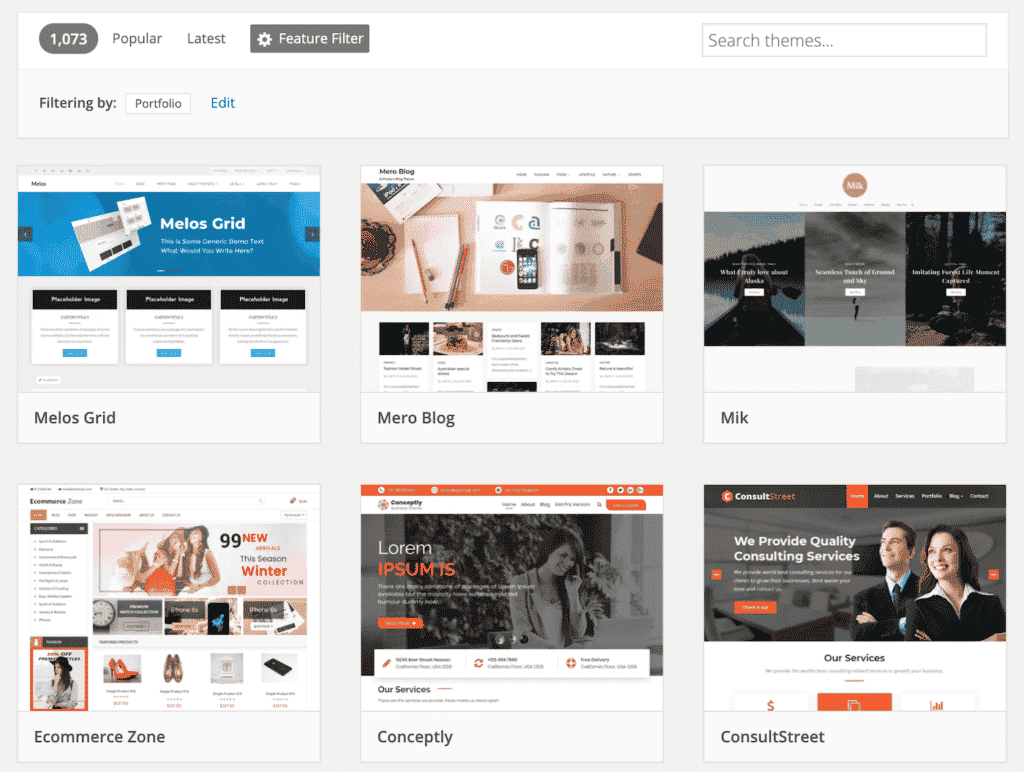
Here are some recommendations:
- Photographers – Pixgraphy
- Web designers and developers – Talon
- Freelance service providers – Portfolio Web
Alternatively, you can go with a premium WordPress portfolio theme or a page builder (like Visual Composer or Elementor). Page builders often come with widgets and page elements that make it easy to add portfolio items anywhere on your site.
Step #2: Upload Portfolio Items to WordPress
Once you’ve picked out a suitable portfolio theme, the next step is to upload portfolio items to your WordPress website.
If you’re an author, blogger, or freelance writer, you might need to upload documents for your portfolio. We recommend using the Filr plugin to do this. Filr lets you upload, protect, and share files with prospective clients directly through your website. In addition to this, you can configure documents to expire by the number of downloads or by date.
On the flip side, if you’re a photographer or web designer, you might need to create a more image-centric portfolio. For this, you’d simply need to optimize some photos, graphics, illustrations, or screenshots and upload those to the WordPress Media Library. From there, you can add them directly to your online portfolio.
The Talon theme, for example, lets you add new Projects as portfolio items to WordPress.

Step #3: Create a Portfolio Page
Once you’ve added portfolio items to your WordPress website, you need to create a portfolio page to add all of them to. Start by creating a new page in WordPress by going to Pages > Add New from the admin panel.
Give your page a title and add your portfolio items to it. For example, if you’re using the Elementor page builder, you can add the Talon: Portfolio widget to your page to showcase the portfolio items you uploaded to your website as Projects.
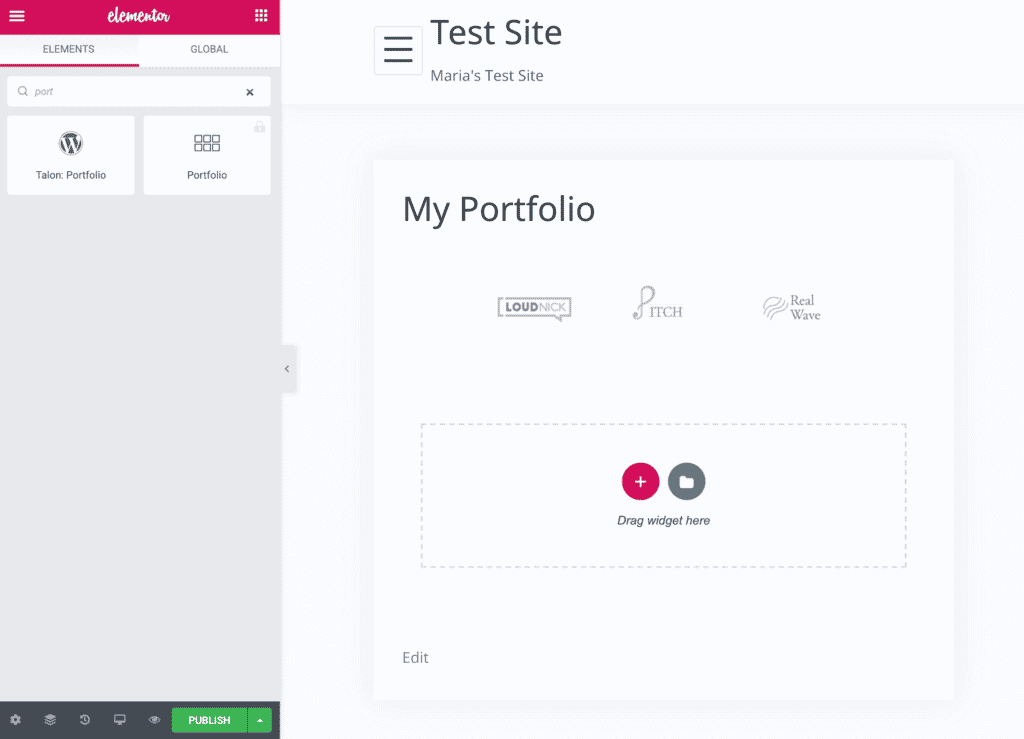
In addition to this, you might also add some text that introduces prospective clients to your portfolio, share some information about yourself, and link to your contact form.
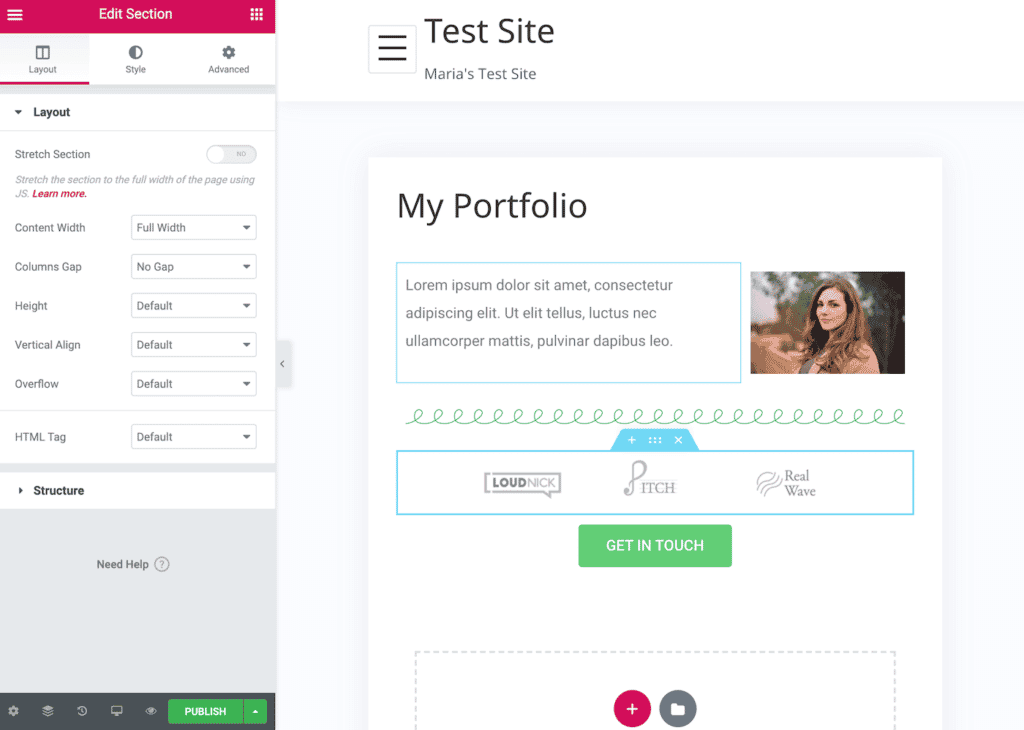
Step #4: Password-Protect Your Portfolio
By now, you’ve created your online portfolio. Next, you need to password-protect it so that it isn’t visible to everyone who visits your website. This way, you can grant access to prospective clients only by sharing the portfolio password with them over email.
Passster is a password-protection plugin for WordPress that makes it easy to protect posts, pages, or parts of your WordPress website using either simple password protection or multiple password protection.
Simple password protection
With simple password protection, you can protect your online portfolio with a single password. This is useful for when you want to grant clients access to your portfolio page but aren’t worried about revoking access afterward.
Open up your portfolio page and toggle on the Activate Protection option from the Passster metabox.
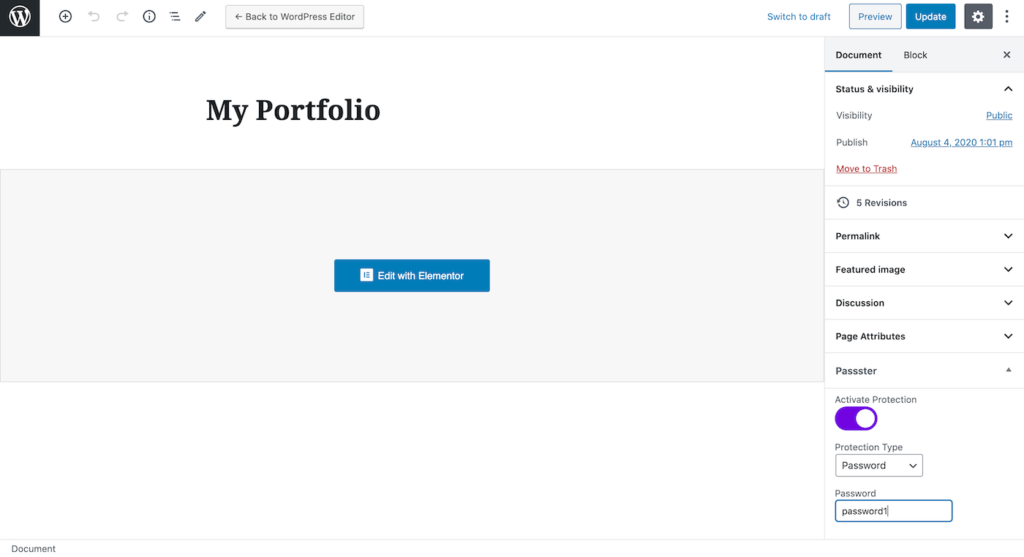
Set the Protection Type to Password using the dropdown menu and enter a password in the Password field.
Multiple password protection
Passster’s multiple password protection option, as the name suggests, lets you create multiple passwords to protect your online portfolio. This is useful for when you want to share your online portfolio with different clients and have the option to revoke access later on.
You can use the multiple password protection feature to create a password list. To revoke access, simply remove the password from your password list.
Here’s how you can set up multiple password protection:
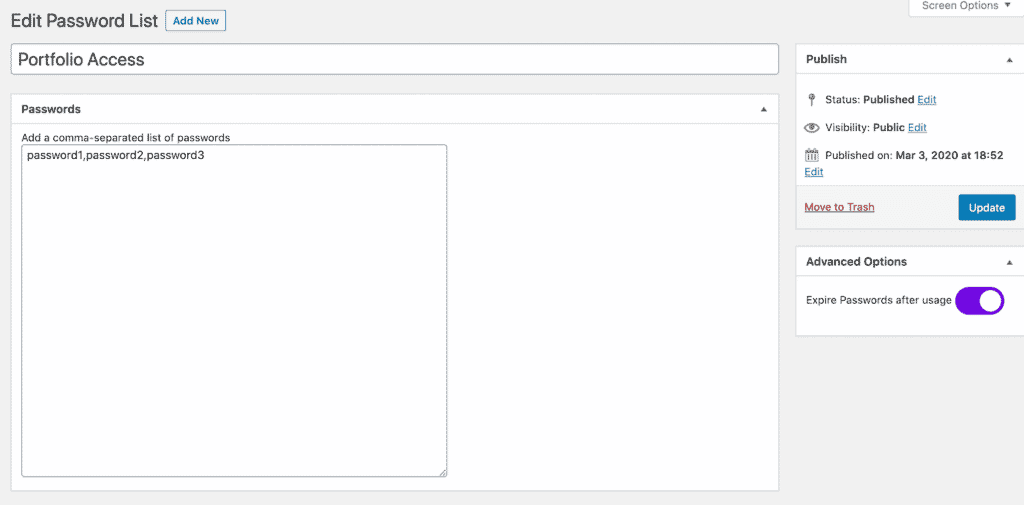
- Navigate to Passster > Password Lists from the WordPress dashboard.
- Click on the Add New button.
- Enter a title for the password list (like Portfolio Access).
- Enter a comma-separated list of passwords to the textbox.
- Optionally, you can create one-time passwords by setting the Expire Passwords option to Yes.
- Click the Publish button.
Open up your portfolio page and toggle on the Activate Protection option from the Passster metabox.

Select the password protection type you’d like to apply to your page. Click Publish… to continue.
Step #5: Add Your Portfolio Page to the Menu
The final step is to add your portfolio page to the main navigation menu on your website. This will make it easier for prospective clients and customers to access the page. You can also add a contact form to your portfolio page to encourage visitors to request access to view the portfolio.
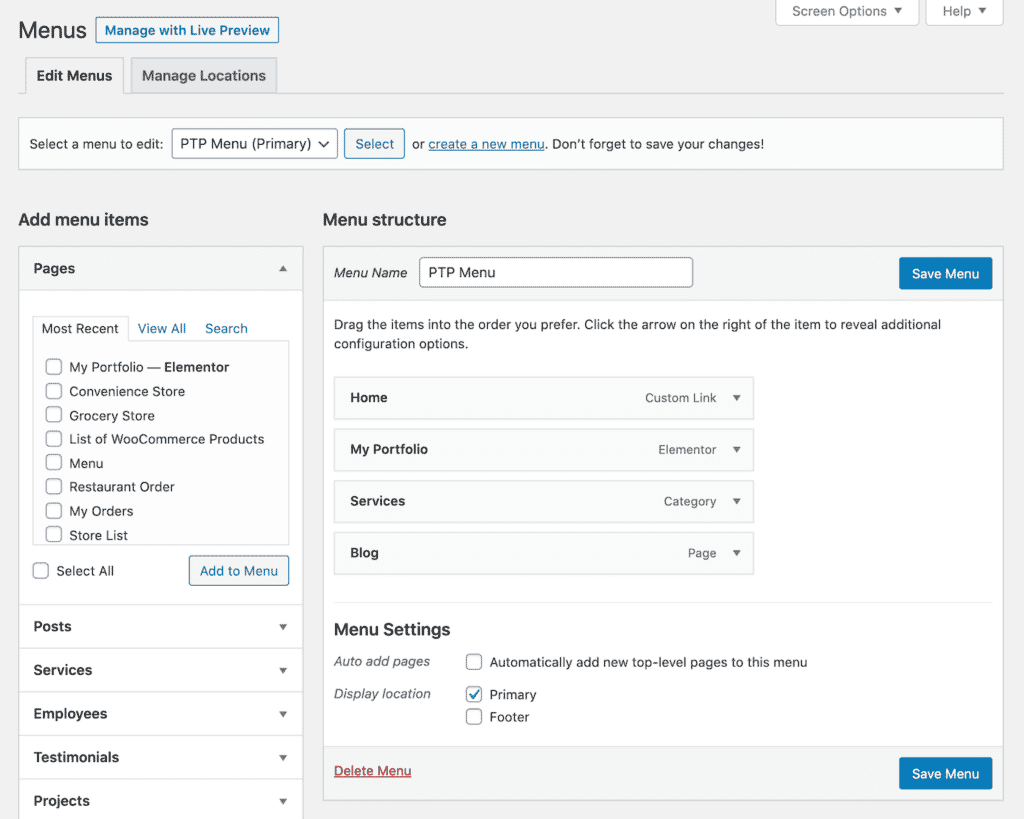
From the WordPress admin panel, go to Appearance > Menus. Next, find your portfolio page in the Pages widget under the Add menu items section. Click the Add to Menu button to add it to your navigation menu. You can drag-and-drop the page to change its order.
Click the Save Menu button to proceed.
Conclusion
The Passster plugin makes it incredibly easy for freelancers, solopreneurs, and business owners to create and password-protect their online portfolios in WordPress. You can choose to set a single password or multiple passwords to prevent unauthorized users from accessing your portfolio.
Passster
Protect your entire website, entire pages, or just parts of your content with one or more passwords.